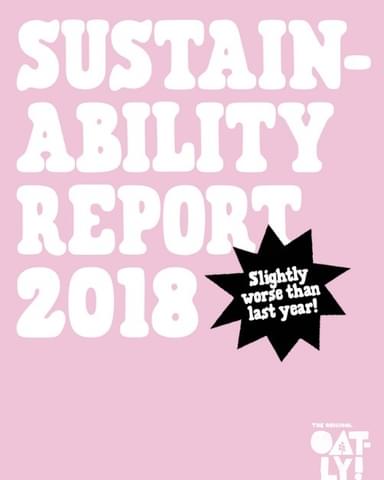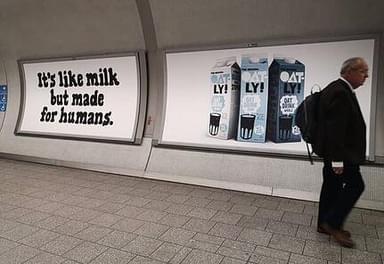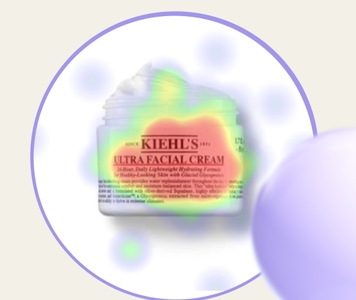There is, finally, a real sense of urgency around the complex concept of “sustainability”. Whether it be the environmental consequences of the climate crisis, or the human consequence of systemic inequity within and across our social and economic systems, there is greater awareness than ever before about the interconnectedness of these issues and the urgent need to address them. It is time for all of us – as citizens, business leaders, and marketers—to lean into what the U.N. World Commission on Environment and Development defines as “development that meets the needs of the present without compromising the ability of future generations to meet their own needs.”
The good news is that there are very real business opportunities here. Big companies able to exert huge influence on supply chains, for example, can reshape markets. And startups, whose speed and agility can solve legacy problems in entirely new ways, creating business models that better address the triple-bottom line of planet, people and profit, are quickly establishing themselves as contenders.
But there are perils and pitfalls, too. Judgement will be swift for those whose public proclamations don’t match their reality (Reformation, Everlane). And those who get caught telling whoppers (VW “Dieselgate”) face massive fines, along with lasting damage to brand equity.
What does this mean for marketers? In this two-part interview, our Director of Marketing, Meagan Healey, sat down with Mark Barden, a partner at strategic brand consultancy eatbigfish, who literally wrote the book on what it means to be a challenger brand, to help us understand how we might take a challenger mindset toward the marketing of sustainability.

What first comes to mind as we talk about sustainability and brand building?
It’s just how much more receptive people are to the conversation these days. Ten years ago, if someone tried to introduce sustainability into a branding discussion, it often felt forced, or met some resistance. But that has changed dramatically now, to the point where sustainability is in almost every conversation in some way. That’s partly because the consumer is demanding to know what’s being done, but it’s also because the employees are demanding to know too. It’s their future, too, and they are concerned about how best to show up, to be part of the solution not the problem.
Where do you start with those kinds of conversations?
It’s important to recognize that sustainability is about deep structures of businesses and the economy—about ethical supply chains, issues of equity in the workplace, and corporate governance—more than it is about marketing. So, the place to start is with an audit of what the truth is, to identify underleveraged assets, as well as issues to address. We may need to go back to the business with a case for greater efforts, built on a view that the consumer will reward us for leading on sustainability. This takes cross-functional teams applying themselves to the problem, not just marketers, and it’s why we ask our clients to bring operations, manufacturing, and sometimes legal and HR people into our process. It takes a village. There has to be real substance behind any marketing claims, because the consumer will find out if there isn’t.
So, this starts before you even talk about marketing?
Sometimes, yes. But because marketers are reading the tea leaves and know where the consumer, or the category is heading better than anyone else in the business, this can be a marketing-led process. Sometimes it helps to start with the vision of where you want to take the brand. If you have proof points to deliver on that vision now that’s great. If you need more in future, ask the business to provide them, and use the vision to inspire change and to guide it.
Is this the kind of work marketers want to do?
The best ones, yes. One of the things that marketers and their agency partners are good at is applying creativity to solving problems. So, we design processes that enable them to take a creative approach to solving the biggest issues of their business. Getting clear on what the right “impossible briefs” are and then applying a “can-if mentality” to them. This is a great role for a marketer, to be problem solvers and creative thinkers for the business, above and beyond what goes into the social media campaign. And, its disciplined work, too. Marketers, backed up by their colleagues, must make a case to the C-suite, in dollars and cents, so it can elevate the role of marketers in the business.
Can you give us an example?
Several years ago, we worked with Clif Bar & Co, already a phenomenal leader in sustainability. We came in through the marketing department but ended up working with the entire leadership team. Then Kevin Clearly, who was CEO at the time, had us build a program to engage about 40% of the company, in both articulating the vision for the business and coming up with a whole host of new initiatives for how to walk that talk. That’s a very Clif thing to do - to involve everyone. They were a great group because they came in with skepticism about marketing and were intent on making this very real as well as very ambitious. We defined important elements of their food philosophy, addressed sourcing issues, we even drafted a speech for Kevin to deliver at The Natural Foods Expo about why it mattered. So, we came in through the marketing door, got the C-suite involved, and ended up engaging the entire company. That’s probably what it takes.
Describe a simple tool that readers might be able to use themselves.
When you’re doing your audit of company or brand practices to do with sustainability, just sort what you find into one of three buckets. “Underperform”, "Brilliant Basics" and "Compelling Differences". Underperform is obvious — things that leave you exposed, where you’re way off the pace. You’ll need a plan to address these. Brilliant Basics are those things that are givens in today’s world. You must do them well to be competitive. Compelling Differences are extra commitments and actions towards sustainability that the company has, or could have, to stand out from the competition. This helps a brand understand how to frame their sustainability narrative for maximum impact, leaning into what is compellingly different, knowing they have the basics covered. Even then there’s the question of what should be foreground and what should be background. Just because you have a strong, even compellingly different sustainability story, does not mean that should be your main message as a brand if there are other, stronger drivers of choice. But increasingly, as accountability grows, it’s about telling a coherent story with depth, with a sustainability story that can be discovered easily by those who want to know even if it’s not the main event.
Who has inspired eatbigfish in this space?
On the mega-corp side, I have a lot of respect for Paul Polman, the former CEO of Unilever, for challenging his organization a decade ago with the Unilever Sustainable Living Plan. When leadership announced they would double the size of the business while halving their footprint, no one knew how they would get that done. It was an audacious challenge that required a root and branch examination of many business practices. The plan faced considerable skepticism from Wall Street. Polman said, "They roll their eyes. They couldn’t care less.” (We wrote about this is our book A Beautiful Constraint, along with Nike and IKEA’s efforts in sustainability). This is important. A public company CEO and board are legally obligated to maximize shareholder value, and it’s not always clear at the outset how ambitious plans to reorganize the businesses around sustainability delivers that. So Polman put his job on the line because he believed in it in a way others might not have. Fortunately, those brands with a strong sustainability story have outperformed those without one. But it illustrates the limitations of corporate legal structures, too, and why the growth of the B-Corp has been an important accelerant for sustainability. One of our clients is taking steps to convert to B-Corp.
On the smaller side, you’ve got to love Oatly, with their very post-modern approach to marketing. They sort of acknowledge that marketing’s a game they need to play, and they do it with style and a wink. It’s very likeable. But they’ve also brought the same candor into how they talk about sustainability. In their annual sustainability report the company owned up to their mistakes and asked their customers to help them become better together. They’re admitting that this stuff is hard. That sometimes there is no perfect choice, just a set of sub-optimal ones. That’s a whole new level of transparency for brands, and it really helps re-establish the trust that’s gone missing between this generation of young people and corporations.


Want some more?
Yes, but we’ll do a second piece to talk more about your tips for taking a challenger approach to marketing sustainability. So last question for now, one that I often pause to ask myself:
Are you optimistic about the future?
Ouch! Hmm… well, if you stare hard at the data about the climate crisis, or the various inequities in the system, it’s really hard not to feel despondent. That’s just truth. But there are so many amazing people and projects happening all around the world that do fill me with hope and optimism, so yes. I know the success of a new wave of sustainability-driven challengers will inspire more companies to do the hard work. And one more thing we learned from Unilever is that an ambitious sustainability plan can do wonders for workplace morale and commitment. It brings to mind the Margaret Mead quote “Never doubt that a small group of thoughtful committed citizens can change the world; indeed, it's the only thing that ever has.” We don’t need everyone, just the committed few.
If you want to know more about Mark and his team's amazing work at eatbigfish, be sure to check out their website.
Curious to learn how you can make your brand more sustainable? Read our Sussing out Sustainability Report to understand real-time consumer views on sustainability at large, and which on-pack messages intuitively appeal to different generations.




